Welcome back to our Learn to Cross Stitch series, where we’re sharing all you need to know to start cross stitching! In this chapter, we’re diving into the most asked questions from beginners and questions you’ve asked us throughout the series so far. Feel free to navigate our menu below for easy access to whichever questions you have!
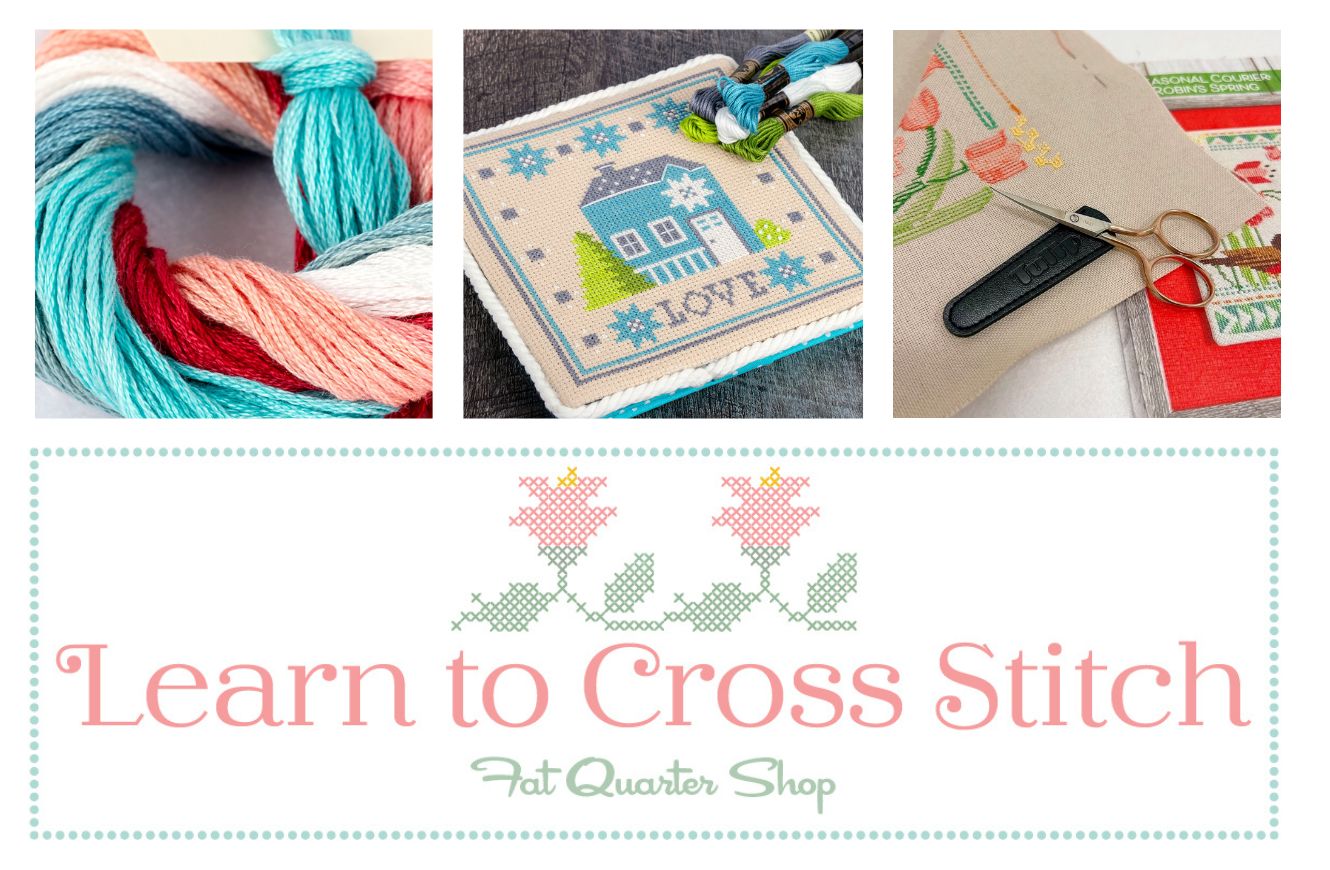
Today’s Cross Stitch Topics
- Today’s Cross Stitch Topics
- How do I start cross stitching?
- What fabric should I use for cross stitching?
- Is there one type of cloth and/or gauge that is easier to stitch in hand with?
- Can I use a different brand of floss than what’s recommended in a pattern?
- How do I avoid tangles in my floss?
- How do I read a cross stitch pattern?
- How do you match and use patterns that are larger than a page and there are overlaps?
- How do I finish off my stitches neatly?
- How frequently should I replace my cross stitch needle?
- What additional notions do you recommend? What does Kimberly use?
- What’s the best way to store my projects?
- Next Up for Beginner Stitchers
How do I start cross stitching?
Starting is easier than you think! Gather your supplies: fabric, floss, needle, and pattern. Begin by threading your needle, then follow your pattern, making small ‘X’ stitches in the fabric. Refer to our Learn to Cross Stitch: Start Stitching blog post for more details.
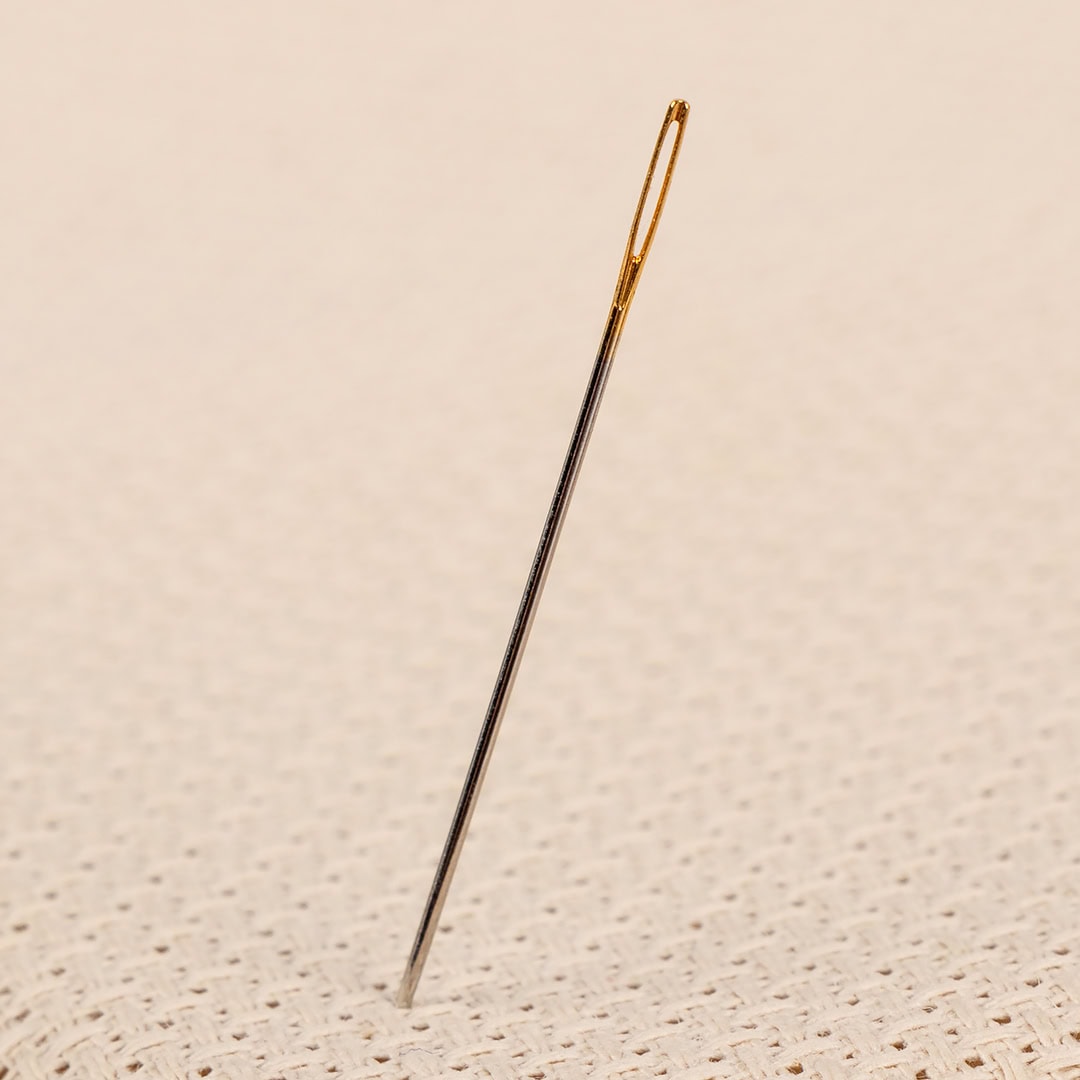
What fabric should I use for cross stitching?
Aida cloth is highly recommended for beginners due to its clear grid pattern, which makes it easy to count and place stitches on. But, we dove into all the cross stitch cloth and fabric details in our How To Choose the Right Cross Stitch Cloth blog post, so we’d recommend checking that out before you make any decisions!
Is there one type of cloth and/or gauge that is easier to stitch in hand with?
Most people who stitch in hand report that Aida cloth with a count of 14 or 16 is easiest to use, as the holes are large enough to see clearly and the fabric is stiff enough to hold without a hoop.
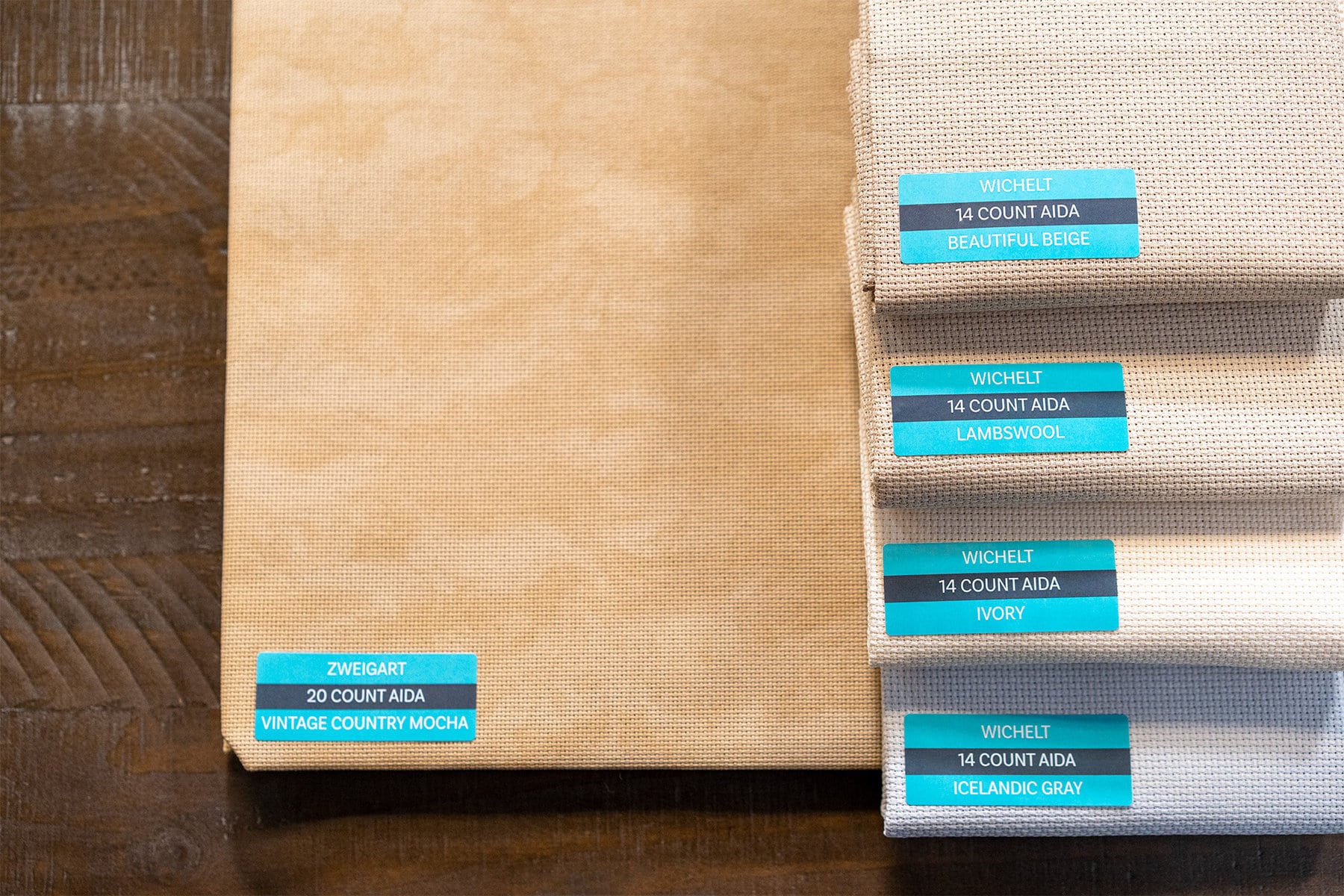
Can I use a different brand of floss than what’s recommended in a pattern?
Yes, you can use different brands, but be aware that floss colors might vary slightly between brands, so your final design may not always match the original perfectly.
How do I avoid tangles in my floss?
Sometimes tangles happen, but there are some things you can do to try and avoid them. Separating the floss strands and smoothing everything out can help. Another thing we highly recommend is a thread conditioner, which will help things glide more easily.
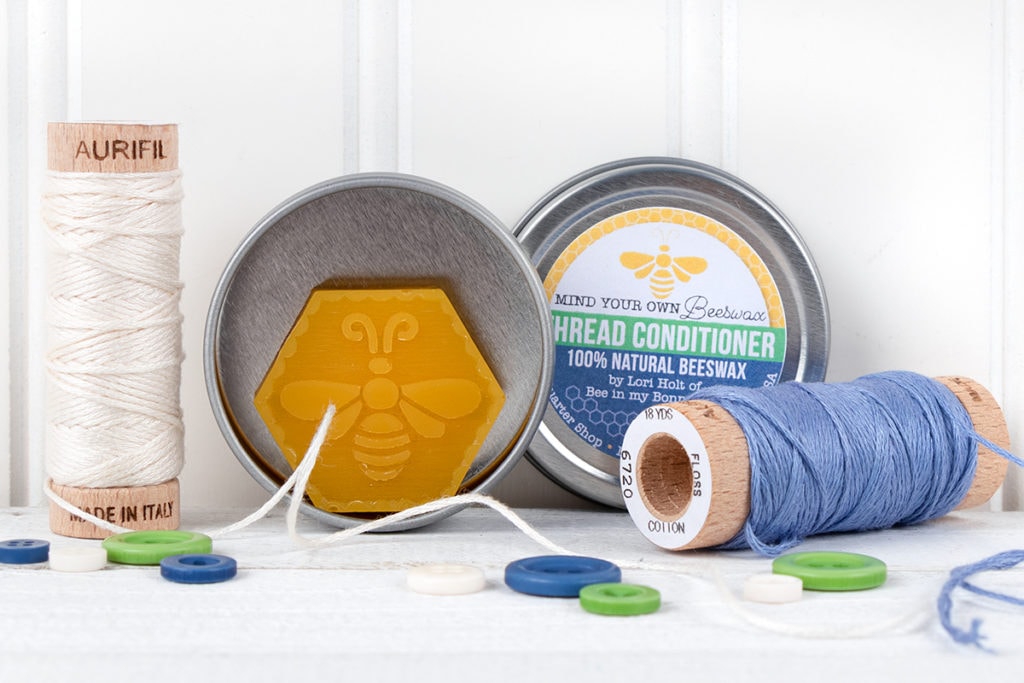
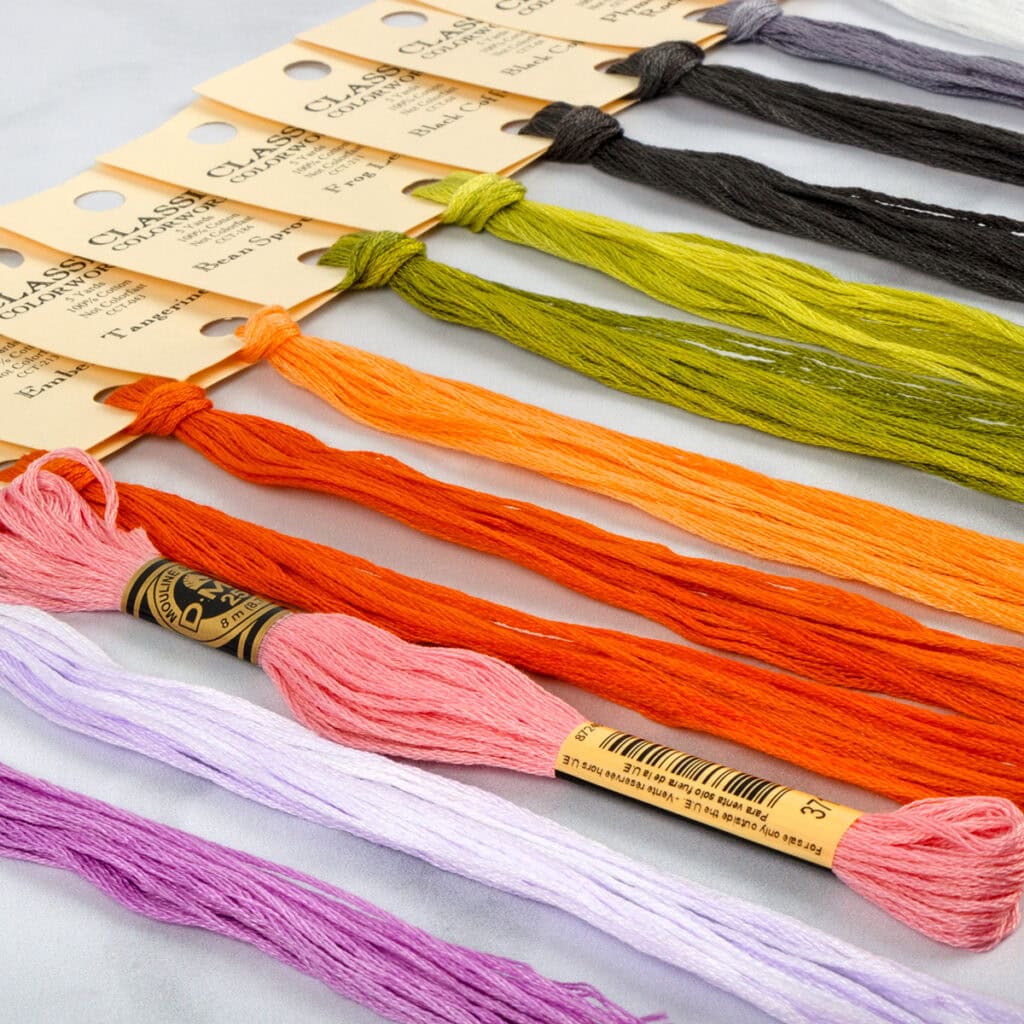
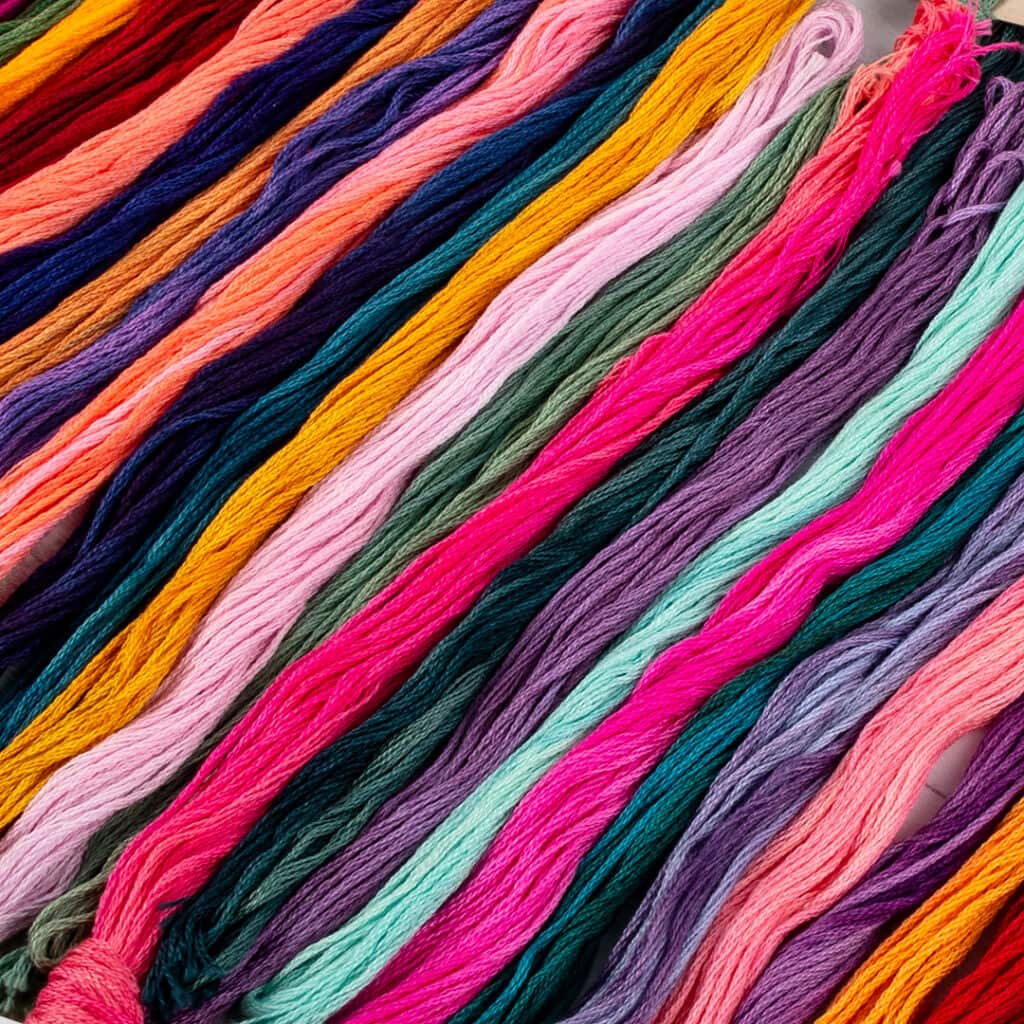
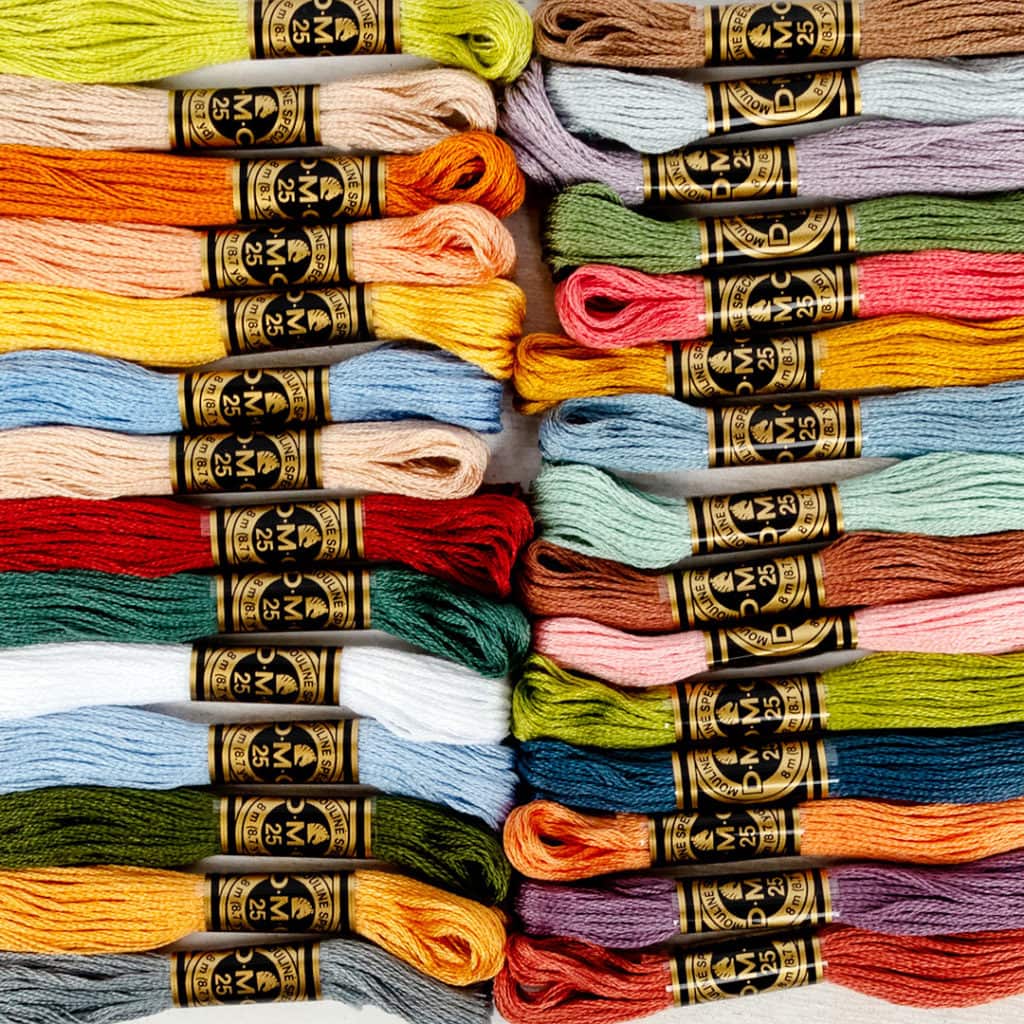
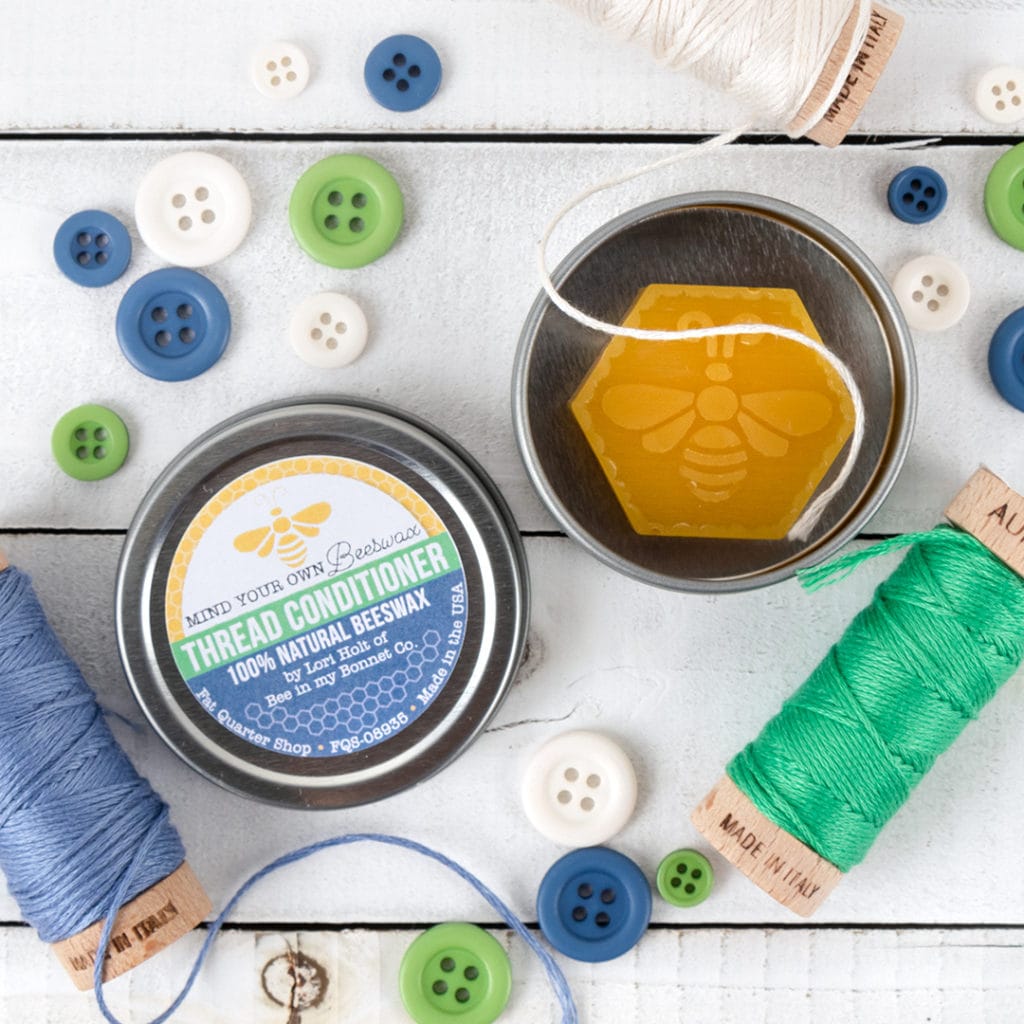
How do I read a cross stitch pattern?
Patterns are typically grid-based, with each square representing a stitch. Symbols or colors within the squares indicate floss colors. Patterns always have legend that you use to match symbols with their corresponding floss colors. Let Kimberly walk you through it though in this video from our Cross Stitch Univeristy YouTube series.
How do you match and use patterns that are larger than a page and there are overlaps?
Patterns larger than a page are pretty common even for some designs where the pattern is smaller than a piece of paper when completed. These patterns are designed with overlap sections to help you determine where your next stitches go when leaving one page and moving on to another.
Stitchy Staffer Cheryl is working on a project with multiple pages right now. She recommends laying the pages over each other and holding them in place with magnets or tape so you can smoothly move through the overlap like you would any other section.
How do I finish off my stitches neatly?
To finish off, weave the thread tail under a few stitches on the back of your work. This secures the thread without bulky knots, keeping the back of your project neat.

How frequently should I replace my cross stitch needle?
Replace your needle when it becomes dull, bent, or rusted. Typically, this is after 20-30 hours of stitching, depending on usage and fabric type.
What additional notions do you recommend? What does Kimberly use?
We recommend having quality scissors, a needle threader, a magnifying lamp for detailed work, and a good storage system for organizing your floss. Learn more about the lights and magnifiers Kimberly uses and recommends in her Stitchy Talk video on our Flosstube Channel!
What’s the best way to store my projects?
We recommend that you store your projects in a clean, dry place while working on them ideally using something like project bags. They’ll keep you organized and keep your WIPS (that’s works in progress) safe! If you’re storing finished pieces the same environment rules apply and we’d recommend putting them in plastic containers or bags before storing away in your closet for the season.
Kimberly explains her methods and shares what she recommends in out All About Bag Organization for Cross Stitching video!
We hope these answers help you on your cross stitch journey! If you have more questions, leave them in the comments below.
Next Up for Beginner Stitchers
We’re nearing the end, but hope you continue to join us for our remaining Learn to Cross Stitch Series posts by subscribing to this blog. On the desktop, you’ll find the Subscribe sign up near the top of the right-hand menu area, and on the phone, it’s near the bottom of the page.
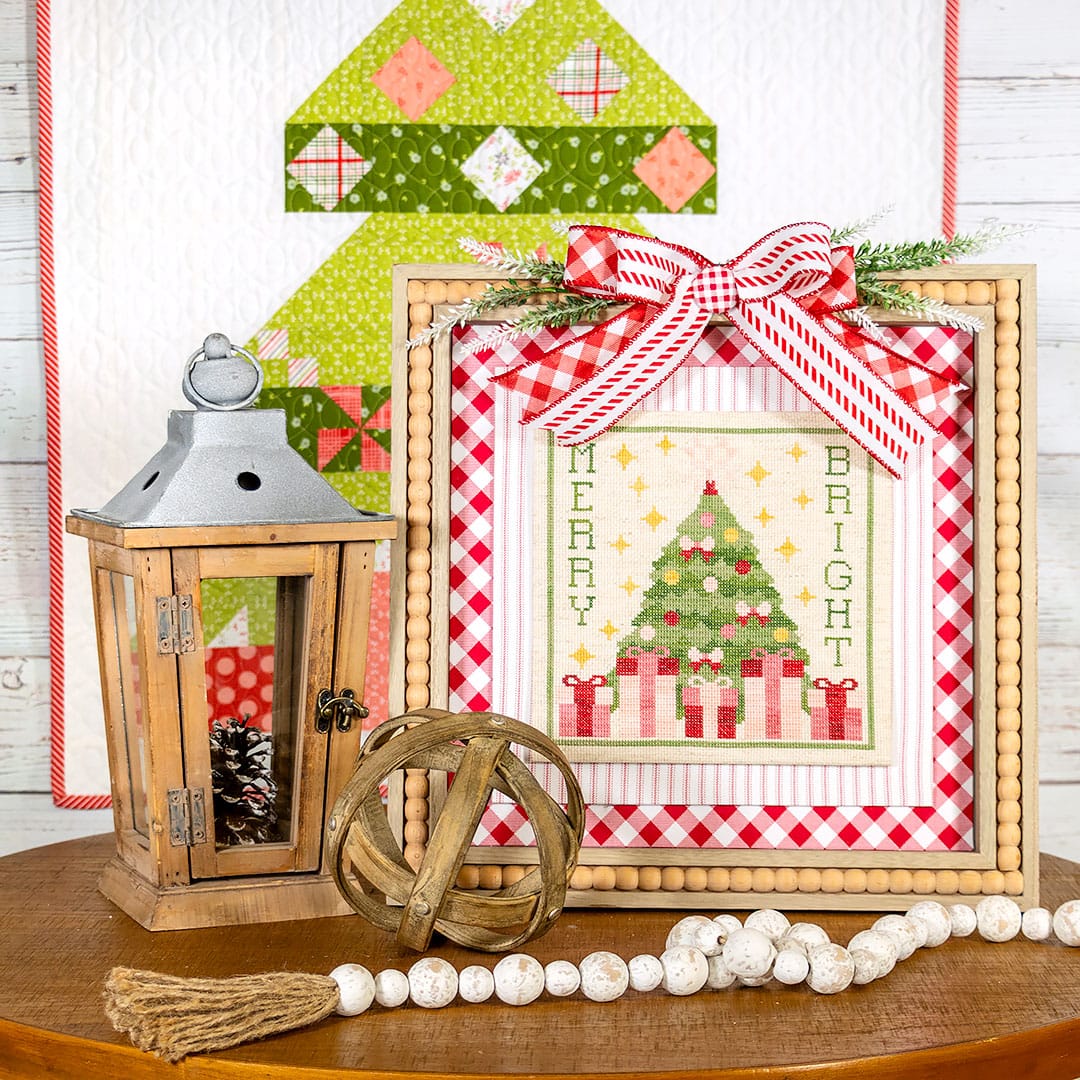

We’ll be sharing the final post of this series the third Thursday of this month! Check back June 20 because we’re finishing with finishings! Drop a comment below and let us know… any questions you still have about finishing your cross stitch projects!
Happy stitching!
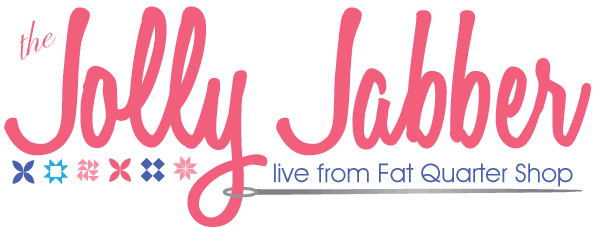





3 comments
Do you really begin cross stitch by knotting your thread once it’s on the needle or is that intended for a different kind of stitching?
Hi Cathy!
Thank you for catching that I updated the text above. That was a typo that slipped by because in some sewing that’s how you get started.
If you have questions about how to thread your needle and get started I’d recommend going to the Learn to Cross Stitch: Start Stitching blog post linked in that section.
Let me know if you have any other questions!
I’m thinking about making my Scarecrow cross stitch into a small wallhanging. My question is – should I put fs101 cotton fusible stabilizer (iron on) on the back so it doesn’t stretch when I attach the boarders? Is that a good stabilizer or should I use something heavier?